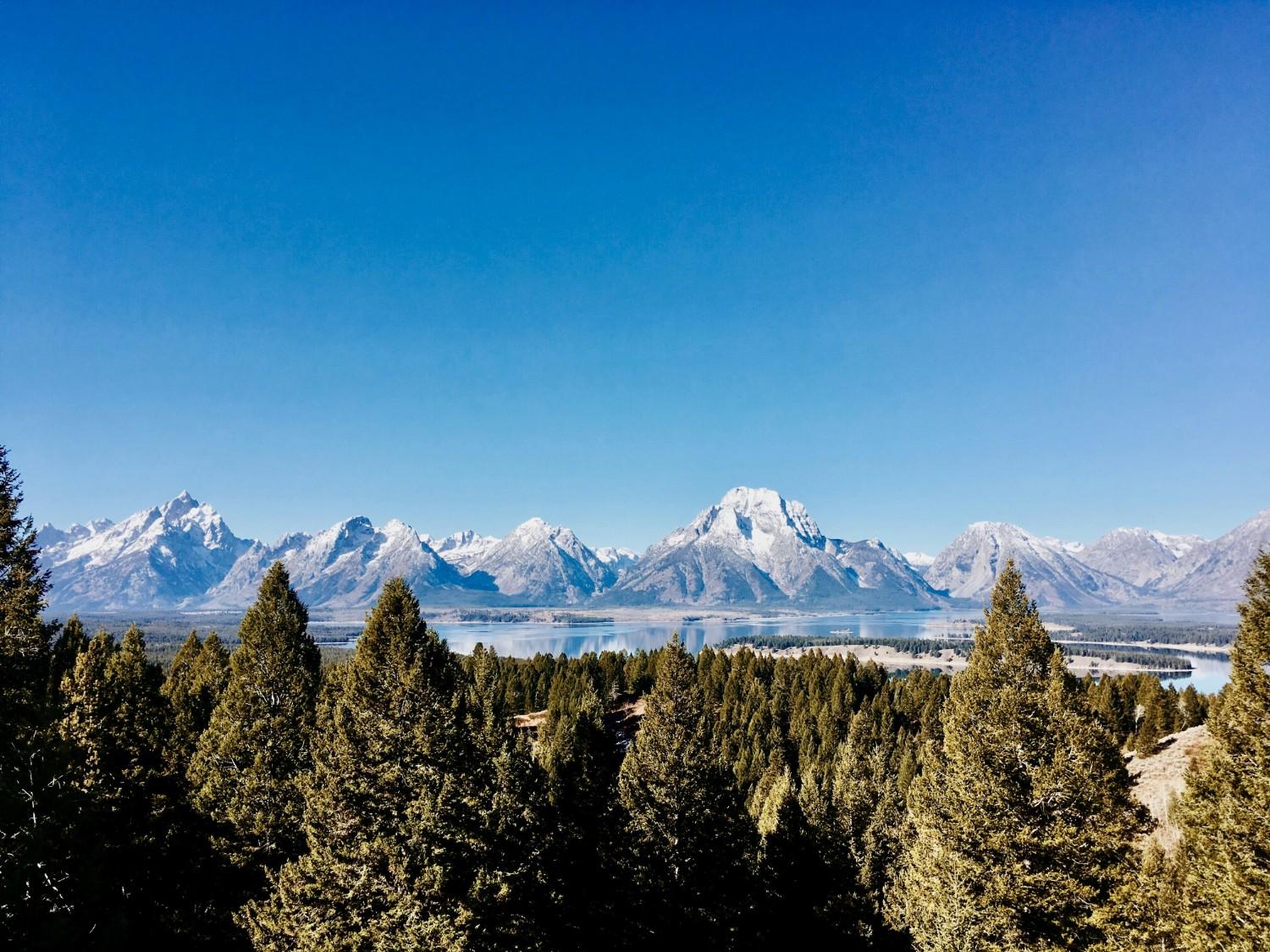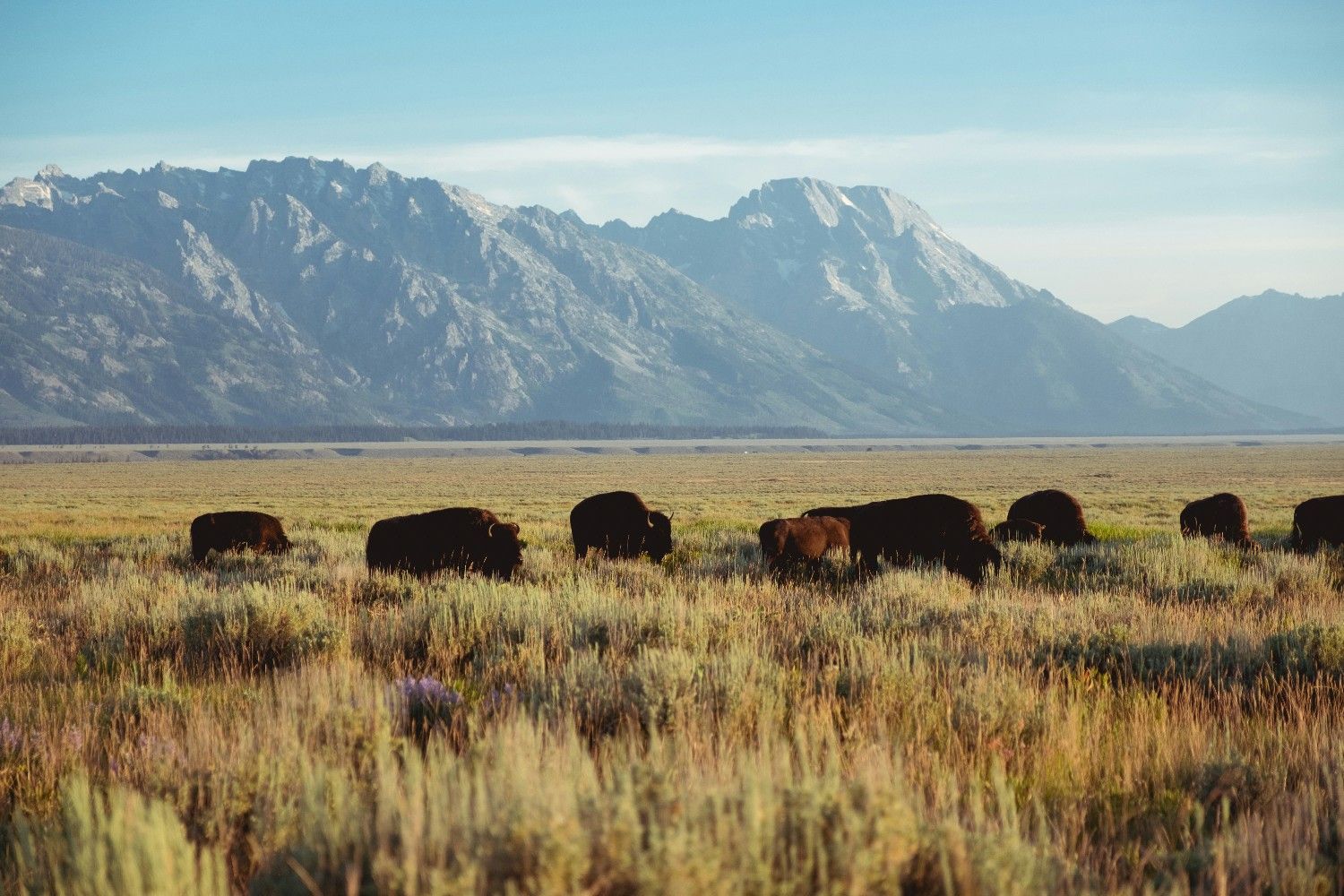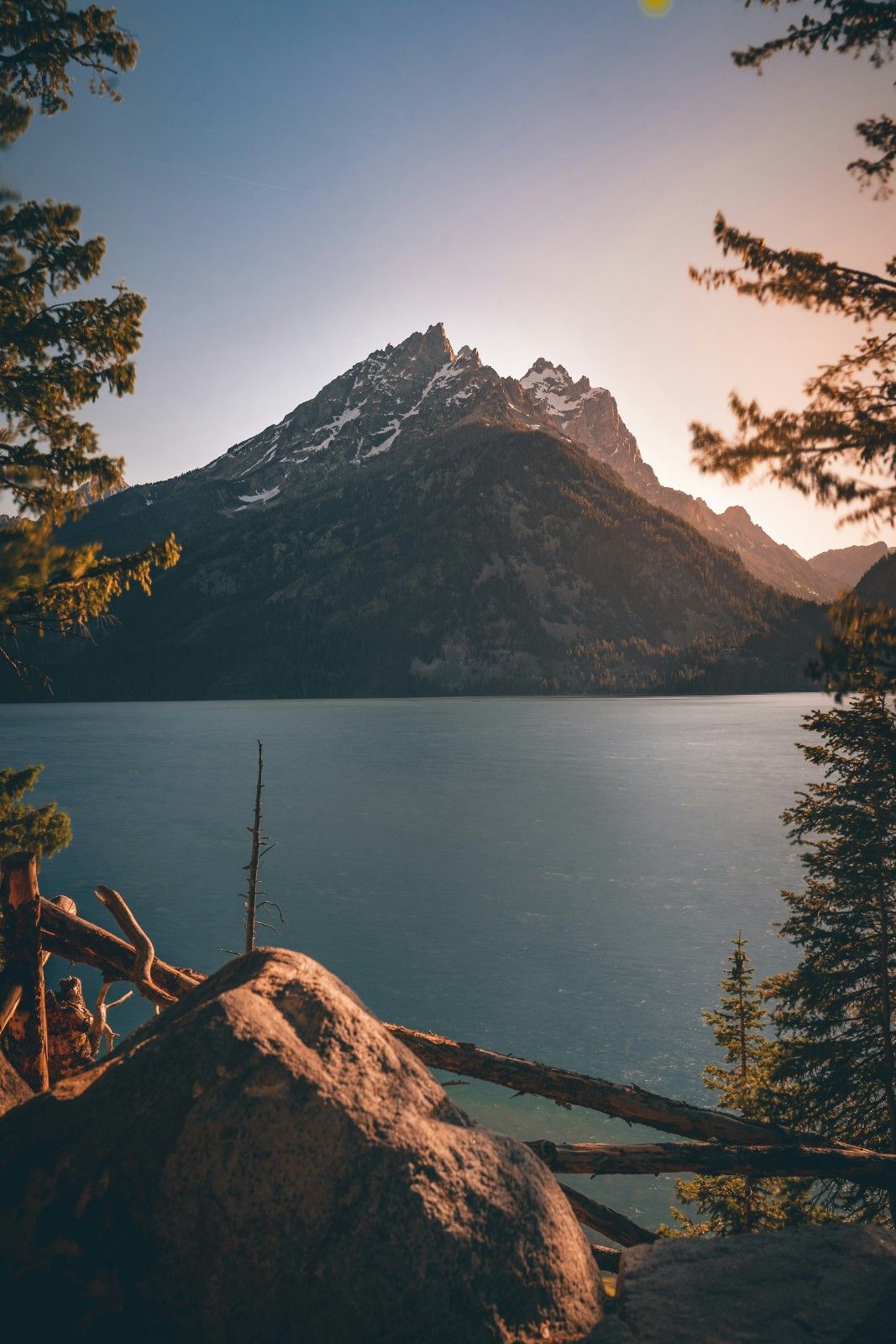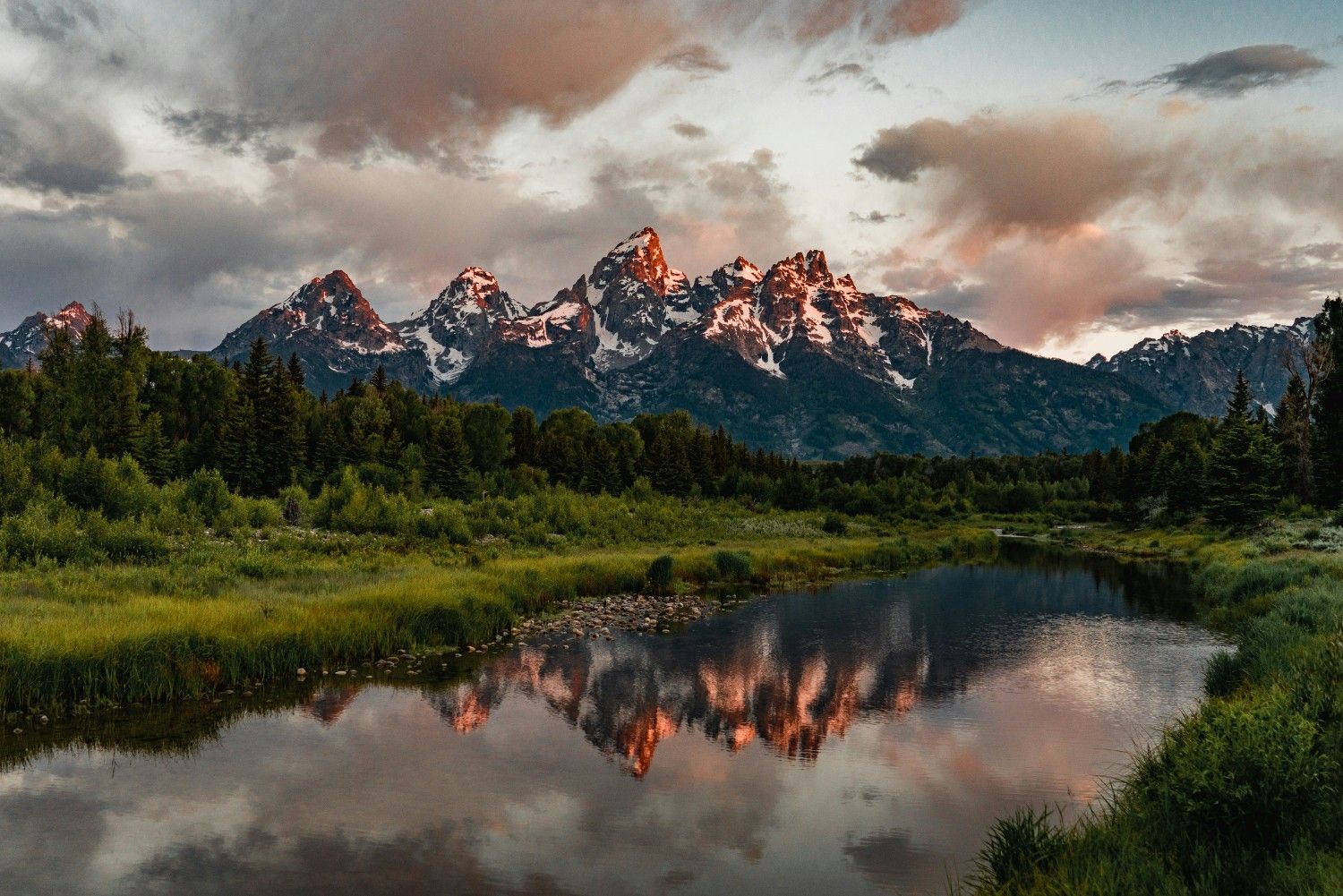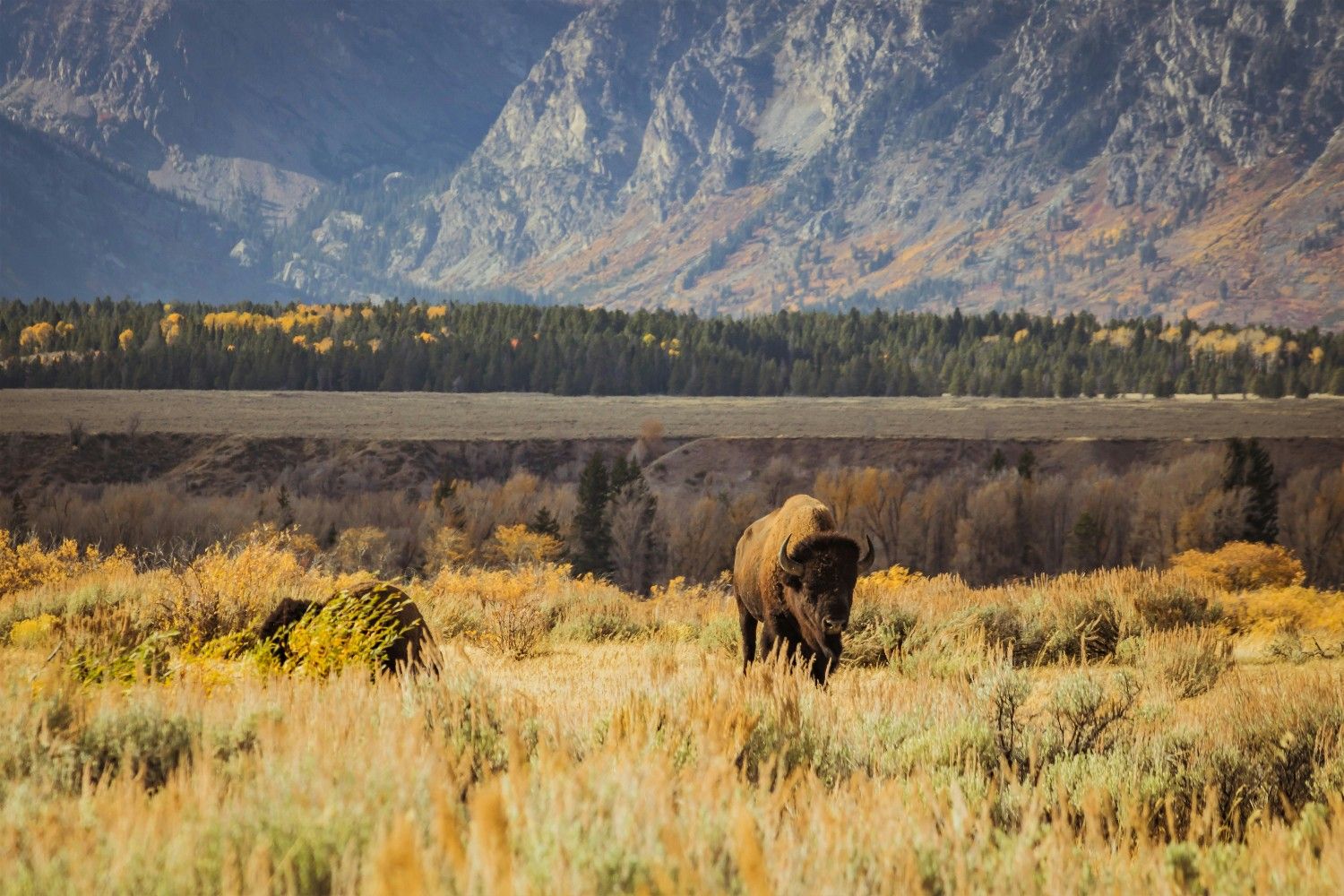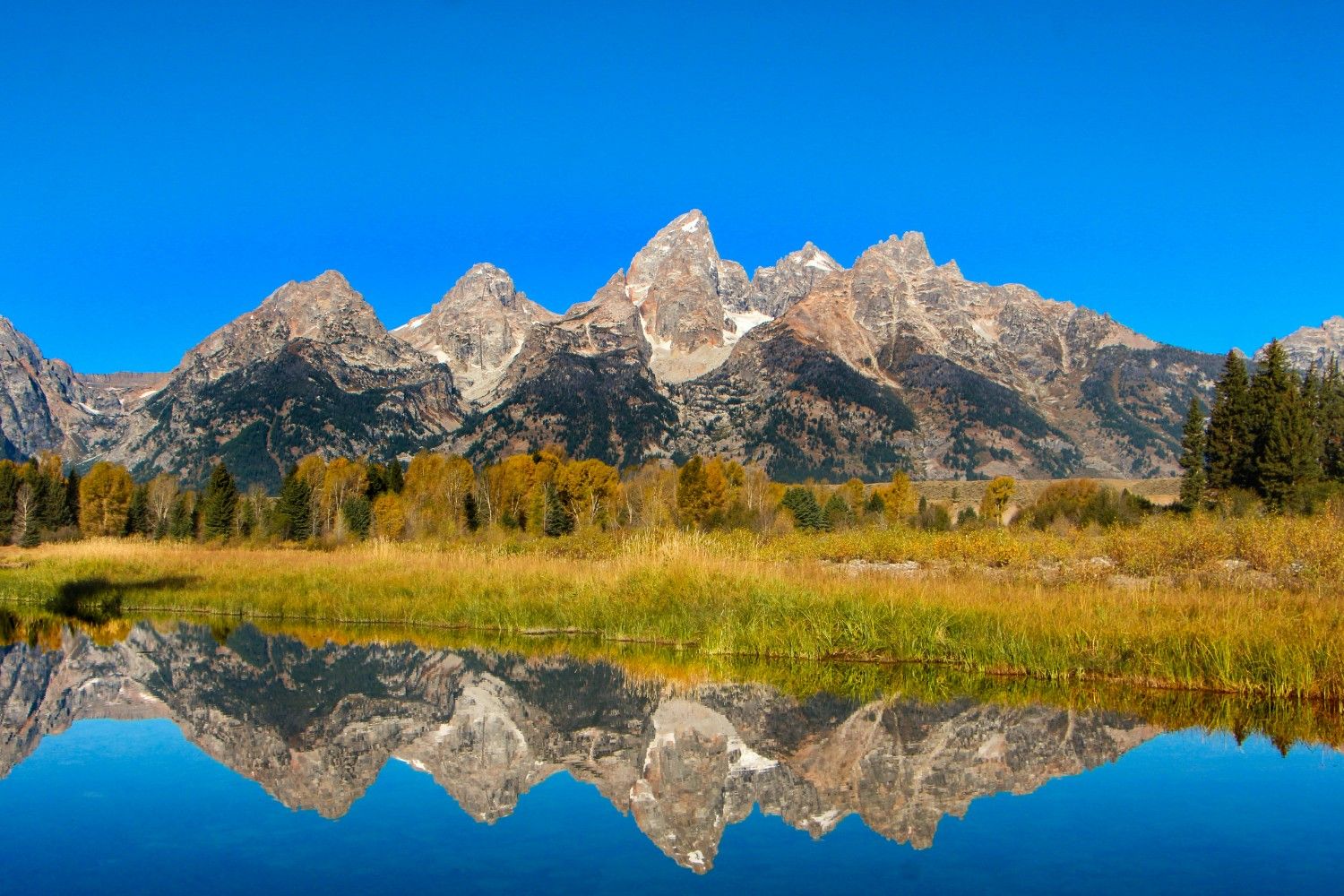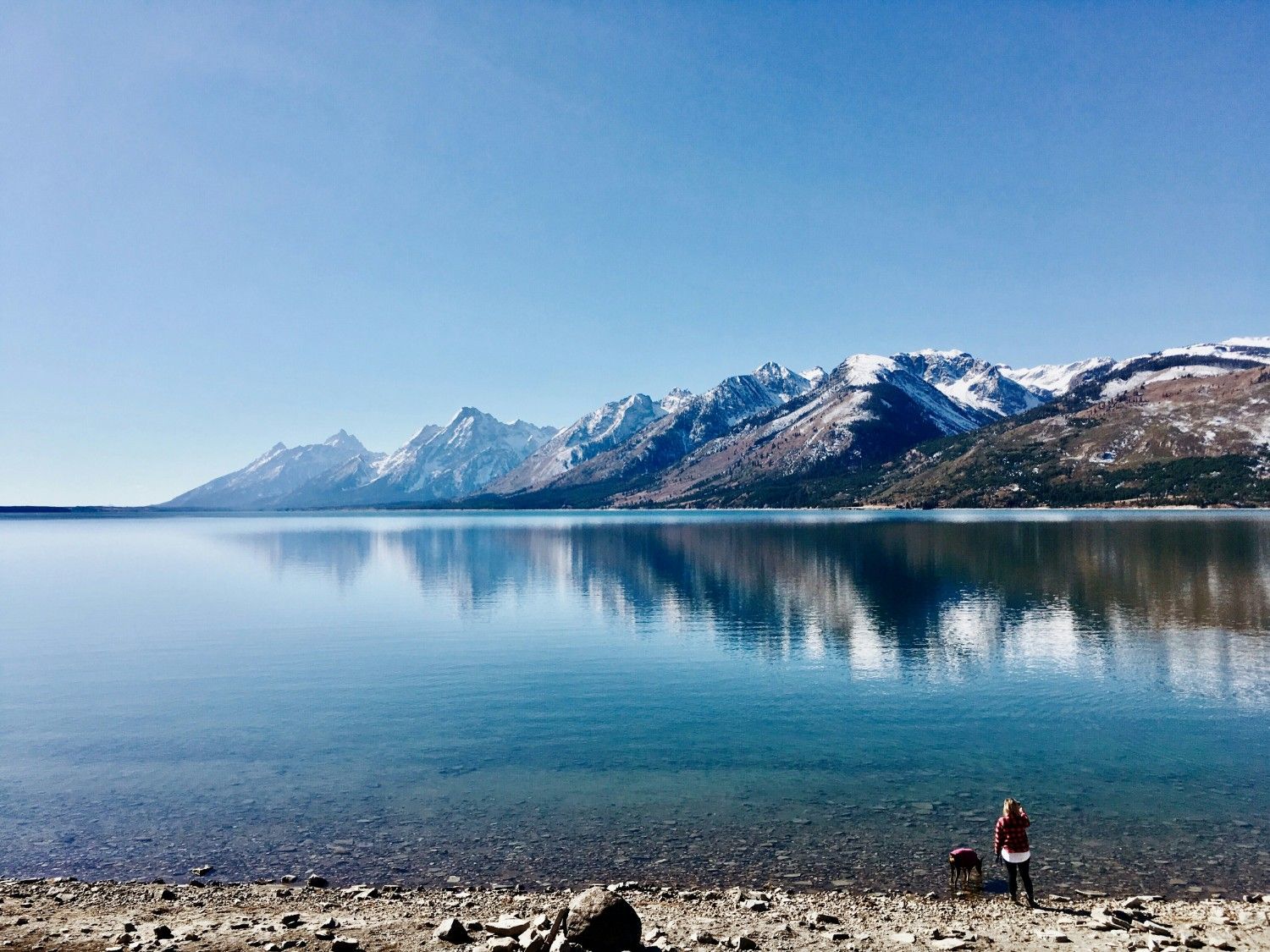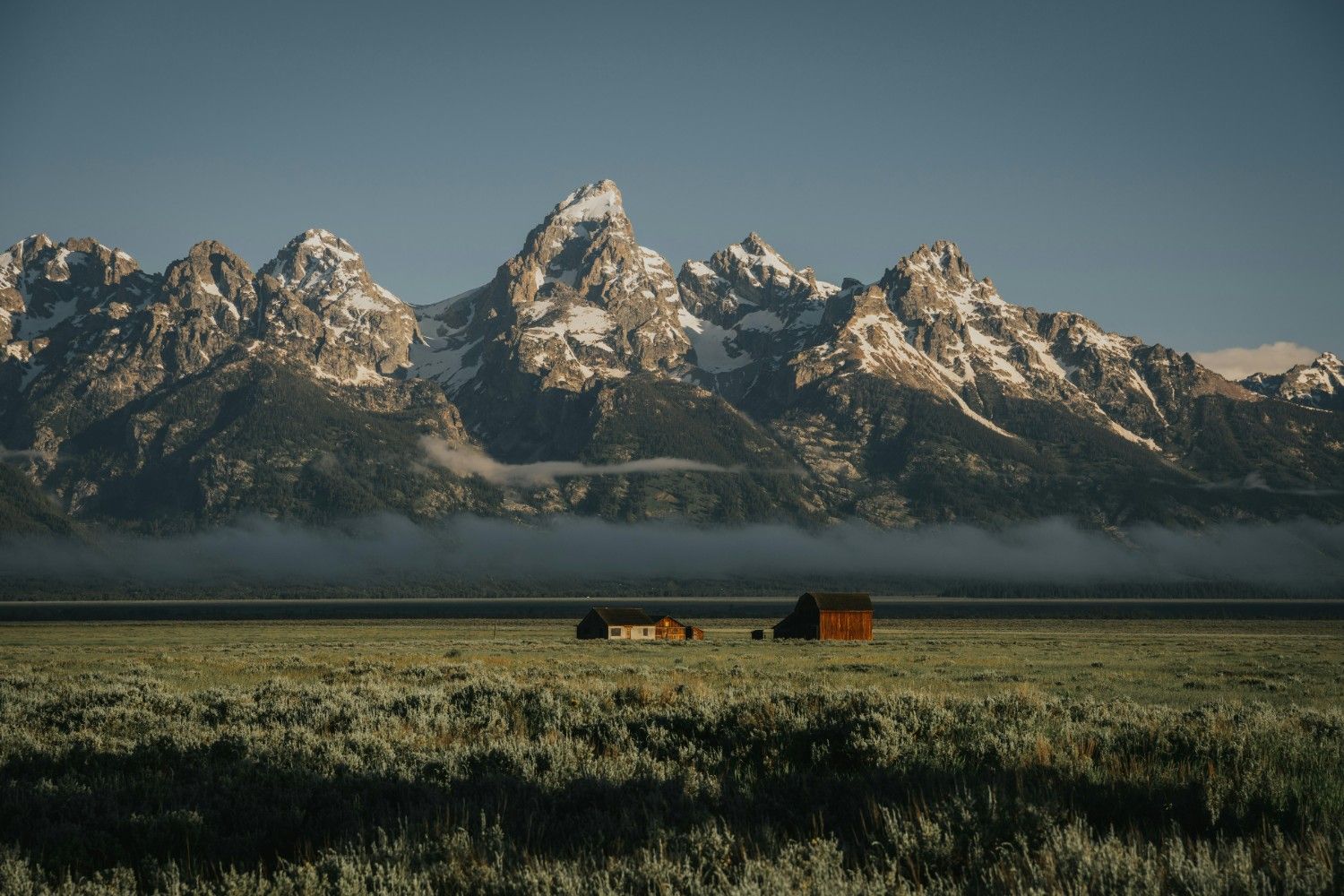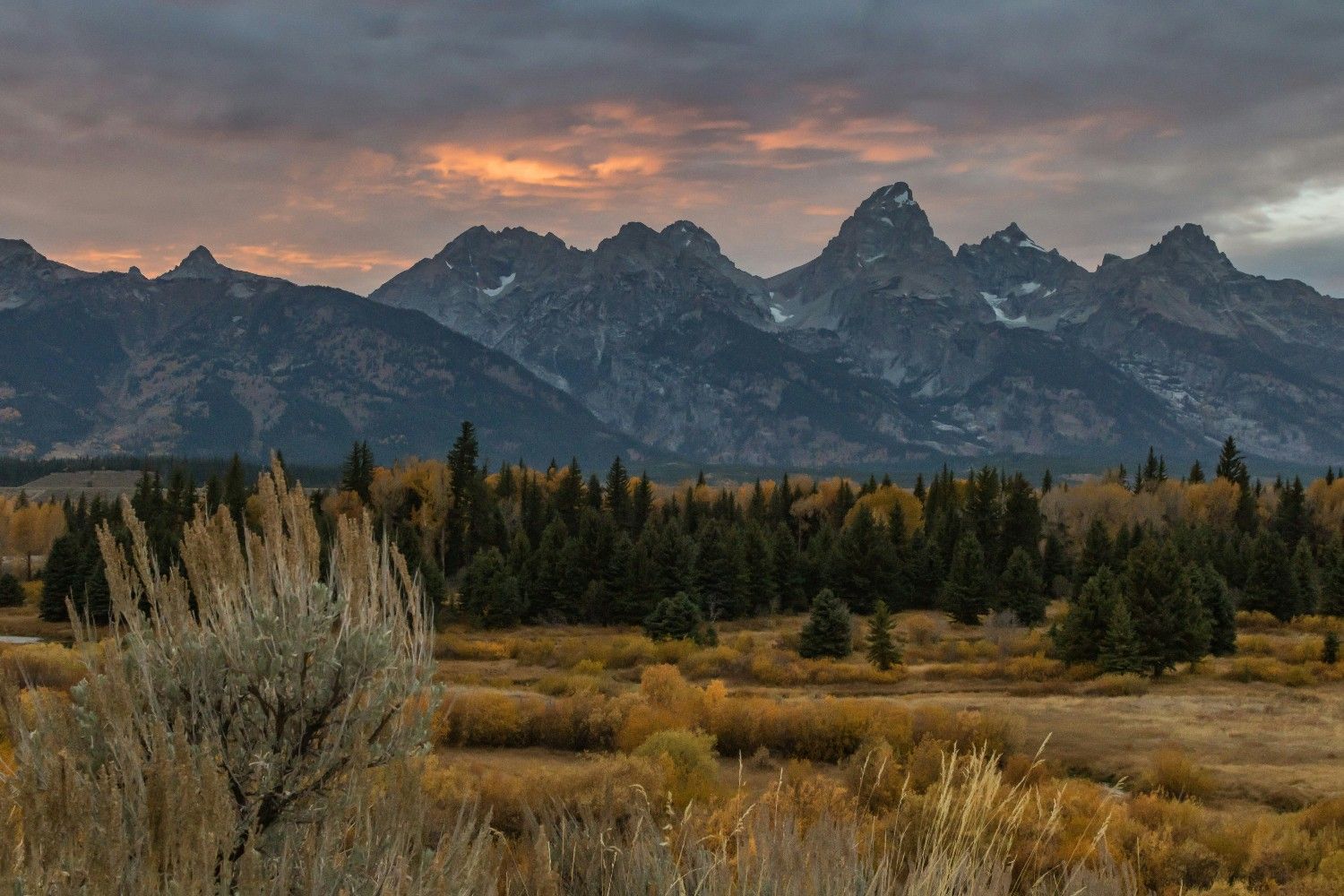Immerse yourself in the awe-inspiring grandeur of Grand Teton National Park, a true outdoor paradise nestled in the majestic Teton Range of northwestern Wyoming. This comprehensive guide unveils the park's breathtaking landscapes, from jagged granite peaks to pristine alpine lakes and winding rivers. Discover a hiker's haven with miles of trails traversing diverse terrains, and witness the park's remarkable wildlife in its natural habitats. Explore camping and lodging options that cater to every preference, and embrace the park's seasonal splendour through a variety of activities and events. Prepare to be captivated by the untamed beauty of Grand Teton National Park.
Grand Teton’s Inspiring Landscapes
Grand Teton National Park's landscapes are a true feast for the senses, with awe-inspiring natural wonders that will leave you breathless. At the heart of this outdoor paradise lies the iconic Teton Range, a striking line of jagged peaks that rise abruptly from the valley floor, creating a dramatic and unforgettable skyline. From lush valleys to alpine tundra, Grand Teton's diverse ecosystems paint a tapestry of natural beauty that will inspire and captivate every visitor.
The Towering Teton Range
The centrepiece of Grand Teton National Park is the Teton Range, a striking line of peaks that abruptly rises from the flat valley floor. The Grand Teton, at 13,775 feet (4,199 metres), commands attention as the park's crowning glory. Its sheer granite walls and glacially sculpted arêtes beckon mountaineers and rock climbers from around the globe. The Teton Range stretches for approximately 40 miles (64 km) across the park, with its highest peaks located in the central region. In addition to the Grand Teton, other notable peaks include Mount Owen at 12,928 feet (3,940 metres), Teewinot Mountain at 12,325 feet (3,757 metres), and Nez Perce Peak at 11,901 feet (3,627 metres). These jagged peaks are composed of ancient granite and sedimentary rocks that were uplifted and sculpted by glaciers during the last ice age, creating the dramatic and rugged landscape we see today. The Teton Range is also home to several remaining glaciers, including the Teton Glacier, which clings to the slopes of the Grand Teton.
Pristine Lakes and Rivers
Complementing the majestic peaks are the park's pristine lakes and rivers, each reflecting the grandeur of the surrounding landscape.
Jenny Lake — Located at the base of the Teton Range, Jenny Lake is a popular destination for hikers and photographers alike. Its turquoise waters, fed by glacial meltwater, offer stunning reflections of the towering peaks. The Jenny Lake Trail, a 7.6-mile (12.2 km) loop, provides access to various viewpoints and the opportunity to spot wildlife.
String Lake — Nestled in the heart of the Teton Range, String Lake is a serene and picturesque body of water accessible via the String Lake Trailhead. The 3.7-mile (6 km) loop trail around the lake offers beautiful views of the surrounding peaks and the chance to observe wildlife.
Jackson Lake — The park's largest lake, Jackson Lake spans 15 miles (24 km) in length and offers ample opportunities for boating, fishing, and waterfront camping. The Snake River winds its way through the northern end of the lake, creating a stunning confluence of water and mountains.
Leigh Lake — Located in the heart of the Teton Range, Leigh Lake is a beautiful alpine lake accessible via a 6.9-mile (11.1 km) round-trip hike from the String Lake Trailhead. Its crystal-clear waters and rugged surroundings make it a popular destination for hikers and photographers.
The Snake River — Winding its way through the park, the Snake River is a vital waterway that not only adds to the scenic beauty but also provides excellent fishing spots for anglers. The river's headwaters originate in the Teton Range, fed by glacial meltwater and numerous tributaries.
Trails and Hiking Adventures
Grand Teton National Park boasts an extensive network of hiking trails, catering to all skill levels. The park's well-maintained trails wind through diverse landscapes, from lush meadows to alpine tundra, offering hikers a chance to immerse themselves in nature's grandeur.
Moderate Hikes
For those seeking a moderate challenge, Grand Teton offers several rewarding hikes:
Cascade Canyon Trail — This 9.7-mile (15.6 km) round-trip hike takes you through a stunning canyon with breathtaking views of the Teton peaks. The trailhead is located at the String Lake Trailhead.
Taggart Lake Trail — A 6.9-mile (11.1 km) round-trip hike leading to a picturesque alpine lake, surrounded by towering peaks. Trailhead is located at the Taggart Lake parking area.
Amphitheater Lake Trail — An 8.6-mile (13.8 km) round-trip hike that offers panoramic views of the Teton Range and a chance to witness glacial features. Trailhead is located at Lupine Meadows.
Static Peak Divide Trail — A 9.4-mile (15.1 km) round-trip hike that traverses the ridge between Teton Canyon and Glacier Gulch, with stunning vistas. The trailhead is located at Death Canyon Trailhead.
Lake Solitude Trail — This 14.5-mile (23.3 km) round-trip hike takes you through lush forests and past cascading waterfalls to a serene alpine lake. Trailhead is located at the String Lake parking area.
Strenuous Treks
Experienced hikers can tackle some of the park's more demanding and rewarding hikes:
Teton Crest Trail — A 39.4-mile (63.4 km) strenuous trek traversing the entire Teton Range, with opportunities to summit several peaks. Permits are required for overnight camping.
Paintbrush Canyon Trail — A 19.2-mile (30.9 km) loop that offers stunning vistas of the Teton Range and a chance to explore remote areas. Trailhead is located at the String Lake parking area.
Garnet Canyon Trail — A 19.5-mile (31.4 km) round-trip hike that leads to the stunning Garnet Canyon and the base of the Grand Teton. Trailhead is located at Lupine Meadows.
Avalanche Canyon Trail — This 17.2-mile (27.7 km) round-trip hike takes you through a glacially-carved canyon with opportunities for wildlife viewing. Trailhead is located at the Taggart Lake parking area.
Cascade Canyon to Lake Solitude via Paintbrush Canyon — A strenuous 20-mile (32.2 km) loop that combines several trails for a challenging yet rewarding adventure. Multiple trailhead options.
Day Hikes
For those seeking a more leisurely experience, Grand Teton offers numerous day hikes:
String Lake Trail — A 3.7-mile (6 km) loop around the picturesque String Lake, offering beautiful views of the Tetons. Trailhead is located at the String Lake parking area.
Lakeshore Trail — A 6.8-mile (10.9 km) round-trip hike along the shores of Jackson Lake, providing stunning vistas and birdwatching opportunities. Trailhead is located at Colter Bay Village.
Hidden Falls and Inspiration Point — A 4.9-mile (7.9 km) round-trip hike that leads to a scenic waterfall and a viewpoint overlooking Jenny Lake. Trailhead is located at Jenny Lake Visitor Center.
Phelps Lake Trail — A 7.1-mile (11.4 km) loop around Phelps Lake, offering views of the Teton Range and a chance to spot wildlife. Trailhead is located at Laurance S. Rockefeller Preserve Center.
Lupine Meadows Trail — A 2.7-mile (4.3 km) round-trip hike through wildflower-filled meadows, with stunning views of the Teton Range. Trailhead is located at Lupine Meadows.
Wildlife Watching and Photography
For nature enthusiasts and photographers, Grand Teton National Park offers an unparalleled opportunity to witness and capture the raw beauty of the American West. This extraordinary landscape is home to a diverse array of wildlife, from majestic elk and bison roaming the vast meadows to black bears and grizzlies prowling the dense forests. Keen observers may spot elusive creatures like wolves, foxes, and bighorn sheep in their natural habitats, while birdwatchers can delight in the park's abundant avian species, from soaring raptors to vibrant songbirds. Photographers will find themselves spoiled for choice, with countless opportunities to immortalise the park's grandeur – whether it's the jagged peaks of the Teton Range reflected in a glassy lake, a bull moose silhouetted against the golden light of sunrise, or a wildflower-filled meadow framed by the rugged mountains.
Wildlife Viewing Hotspots
Grand Teton National Park is a haven for wildlife enthusiasts and photographers. The park's diverse ecosystems support a wide range of animals, including elk, bison, pronghorn, black bears, grizzly bears, and a variety of bird species. Here are some of the top spots for wildlife viewing:
Willow Flats — Located in the northern part of the park, near Jackson Lake Junction, Willow Flats is a lush meadow area where herds of bison and elk frequently graze. This area offers excellent opportunities to observe these magnificent animals from a safe distance, particularly during the early morning and evening hours.
Oxbow Bend of the Snake River — This iconic location, situated along the Inner Park Road near Jackson Lake Junction, is renowned for its picturesque landscapes and excellent wildlife viewing opportunities. Moose are often spotted grazing in the willows along the river's edge, and beavers can be seen swimming and building their dams. It's also a prime spot for observing a variety of bird species, including bald eagles and ospreys.
Gros Ventre Road — This scenic drive, stretching for 24 miles (38.6 km) through the eastern region of the park, offers excellent chances to see wildlife in its natural habitats. Keep your eyes peeled for bears, moose, pronghorn antelope, and even wolves, particularly in the early morning and evening hours.
Elk Ranch Flats — Located in the southern part of the park, near the town of Kelly, Elk Ranch Flats is a prime location for observing the park's elk herds during the fall mating season (known as the rut). The bugling calls of the bull elk echoing through the meadows are an unforgettable experience.
Photography Highlights
Grand Teton National Park offers endless opportunities for photographers to capture breathtaking landscapes, wildlife, and natural wonders. Here are some of the top photography spots:
Snake River Overlook — Located along the main park road, this iconic viewpoint provides a stunning vantage point to photograph the Teton peaks reflected in the Snake River's waters. The best light for capturing this scene is often during the golden hours of sunrise and sunset.
Mormon Row Historic District — This area, situated in the park's eastern region, features old barns and homesteads against the backdrop of the Teton Range, making for iconic and beautiful compositions. The T.A. Moulton Barn, built in the 1930s, is a particular favourite among photographers.
Schwabacher Landing — This area, located along the Snake River in the park's eastern region, offers excellent opportunities for landscape and wildlife photography. The meandering river, lush meadows, and towering peaks create a serene and picturesque setting, particularly during the early morning and evening light.
Oxbow Bend — In addition to being a wildlife hotspot, Oxbow Bend is also a prime location for photographers looking to capture stunning reflections of the Teton Range in the calm waters of the Snake River.
Camping and Lodging Options
For those seeking a true backcountry adventure, Grand Teton offers remote campsites accessible only by hiking or boating, allowing you to escape into nature's embrace. Alternatively, those seeking a touch of luxury can indulge in the park's historic lodges and resorts, where rustic charm meets modern comforts, providing the perfect retreat after a day of exploration. From cosy cabins to upscale suites, Grand Teton's lodging options ensure that every visitor can find their ideal home away from home in this natural paradise.
Campgrounds
Grand Teton National Park offers a range of campgrounds to suit every preference and budget. For those seeking a true wilderness experience, the park's campgrounds provide a chance to immerse yourself in nature. Here are the main campgrounds within the park:
Gros Ventre Campground – Located near the eastern boundary, this campground is a popular choice for its prime location and stunning views of the Teton Range. It offers 360 sites for tents, RVs, and trailers, as well as flush toilets, potable water, and a dump station.
Jenny Lake Campground – Situated near the base of the Teton Range, this campground offers a serene setting and easy access to popular hiking trails and the scenic Jenny Lake. It features 49 tent-only sites and 10 sites for RVs under 30 feet, with flush toilets and potable water available.
Colter Bay Campground – Located on the shores of Jackson Lake in the northern part of the park, this campground offers stunning views and access to water-based activities. It features 335 sites for tents, RVs, and trailers, with flush toilets, showers, and a laundry facility.
Signal Mountain Campground – Just outside the park's southeastern boundary, this campground offers 86 sites for tents, RVs, and trailers, with flush toilets, potable water, and a dump station. It's a convenient option for those visiting the park's southern region.
Headbanger Campground (Group Camping) – This campground, located near Flagg Ranch, is designed for organised groups and offers two group sites that can accommodate up to 35 people each.
Backcountry Camping
For those seeking a more remote and wilderness experience, Grand Teton National Park offers ample opportunities for backcountry camping. However, proper permits and bear-safe food storage techniques are required for this adventure. Some of the popular backcountry camping areas include:
Granite Canyon Trail – Leading to the Granite Canyon Backcountry Campsite, this trail offers stunning views and a chance to explore the heart of the Teton Range.
Death Canyon Shelf – This backcountry campsite is accessed via the Death Canyon Trail and provides a base for exploring the rugged Death Canyon area.
Cascade Canyon – The Cascade Canyon backcountry campsites offer proximity to the stunning scenery of this glacially-carved canyon and access to the Teton Crest Trail.
Leigh Canyon – The Leigh Canyon backcountry campsites provide a peaceful respite in a beautiful alpine setting, with opportunities for wildlife viewing and access to nearby lakes and trails.
Lodges and Resorts
If you prefer more amenities, Grand Teton National Park and its surrounding areas offer a variety of lodges and resorts that provide a comfortable stay amidst the natural splendour. Here are some of the top options:
Jenny Lake Lodge – Built in the 1920s, this historic lodge combines rustic charm with modern amenities. It offers 37 cabin suites with private baths, a renowned restaurant, and spectacular views of the Teton Range.
Jackson Lake Lodge – Located near the northern end of the park, this AAA Four-Diamond lodge offers a variety of accommodations, including cosy cabins, luxurious suites, and an impressive main lodge with dining options and amenities.
Signal Mountain Lodge – Situated just outside the park's southeastern boundary, this lodge offers a range of lodging options, from standard rooms to premium cabins and suites. It also features a restaurant, spa, and stunning views of the Teton Range.
Headbanger Lodge and Cabins – Located near Flagg Ranch, this lodge offers a variety of accommodations, including traditional hotel rooms, cabins, and RV sites, making it a convenient option for exploring the park's northern region.
Teton Village Resorts – Just outside the park's western boundary, the Teton Village area offers a range of upscale resort options, including the Teton Mountain Lodge & Spa, the Snake River Lodge & Spa, and various luxury vacation rentals.
Seasonal Activities and Events
Summer (June to August) — Summer is the park's busiest season, with warm temperatures ideal for hiking, camping, and water-based activities like boating and fishing. During this time, the park hosts various ranger-led programs, including guided hikes, evening talks, and Junior Ranger activities for children. The Jenny Lake Scenic Drive, a popular summer activity, offers breathtaking views of the Teton Range and the opportunity to spot wildlife along the way.
Autumn (September to November) — Autumn brings a vibrant display of fall foliage, making it a prime time for photography and wildlife watching. As the crowds thin, visitors can enjoy a more peaceful and serene experience in the park. The Elk Reduction Program, which takes place during the fall months, provides visitors with the opportunity to witness the park's elk herds and learn about the park's wildlife management practices.
Winter (December to March) — Winter transforms Grand Teton into a snowy wonderland, perfect for winter sports enthusiasts. Cross-country skiing and snowshoeing allow visitors to explore the park's pristine winter landscapes along designated trails. The park also offers guided snowmobile tours for a unique winter adventure, providing access to remote areas and the chance to spot wildlife in their winter habitats.
Spring (April to May) — Spring is a time of renewal, with wildflowers blooming and wildlife emerging from their winter slumber. This season offers excellent opportunities for birdwatching and witnessing the park's natural cycle of rebirth. The annual Elk Fest, held in May, celebrates the park's elk herds and their spring migration, featuring educational programs and guided viewing opportunities.
Events and Festivals
Throughout the year, the park hosts various events and festivals, providing unique experiences for visitors.
The Grand Teton Music Festival, held in the summer, features classical music performances against the stunning backdrop of the Teton Range. This multi-week event attracts renowned musicians and music lovers alike.
The Rendezvous Rock Climbing Festival, held in late summer, brings together rock climbers from around the world to celebrate the sport and explore the park's world-class climbing routes.
The Grand Teton Birding & Wildlife Festival, held in early summer, offers guided tours, workshops, and educational programs focused on the park's diverse bird and wildlife populations.
Seasonal Activities and Events
Visitor Centers and Ranger Programs — To make the most of your Grand Teton National Park experience, proper planning is essential. The park's visitor centres, located at Moose, Jenny Lake, and Colter Bay, offer invaluable information, maps, and ranger-led programs to help you plan your activities. The visitor centres also provide up-to-date information on trail conditions, road closures, and wildlife activity, ensuring a safe and enjoyable visit.
Park Entrance and Fees — Grand Teton National Park charges an entrance fee for private vehicles, which is valid for seven days. Annual passes are also available for those planning multiple visits throughout the year. It's important to note that certain areas of the park may have additional fees, such as backcountry permits or fees for guided activities.
Leave No Trace and Bear Safety — When visiting the park, it's crucial to follow Leave No Trace principles and respect wildlife by maintaining a safe distance. Proper food storage and waste disposal are essential to prevent attracting bears and other wildlife to campsites and picnic areas. Bear safety is also a priority, and visitors should familiarise themselves with proper bear encounter protocols and carry bear spray when hiking in bear country.
Lodging and Camping Reservations — If you plan to stay overnight in the park, it's recommended to make reservations well in advance, especially during the peak summer months. Both campgrounds and lodges tend to fill up quickly, so early planning is key to securing your desired accommodations.
Grand Teton National Park is a true gem, offering a wealth of outdoor adventures amidst breathtaking natural beauty. Whether you're a seasoned hiker, wildlife enthusiast, or simply seeking a rejuvenating escape into nature, this park promises an unforgettable experience. Plan your visit today and immerse yourself in the grandeur of the Teton Range.
Related articles

Let us know you agree to cookies
We use marketing, analytical and functional cookies as well as similar technologies to give you the best experience. Third parties, including social media platforms, often place tracking cookies on our site to show you personalised adverts outside of our website.
We store your cookie preferences for two years and you can edit your preferences via ‘manage cookies’ or through the cookie policy at the bottom of every page. For more information, please see our cookie policy.

